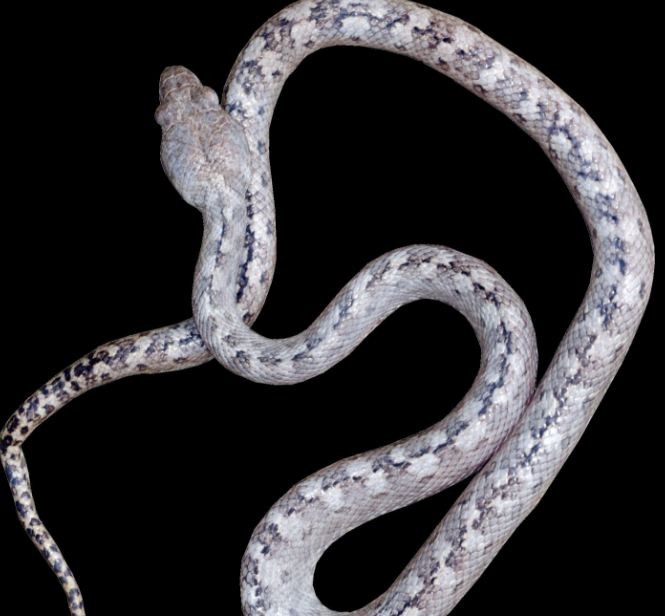A new snake species in Madagascar is being called a "ghost snake" for its pale grey coloration that gives it a ghost-like appearance and for its elusiveness by the researchers that discovered it. The snake's eyes are also similar to that of a cat's.
The ghost snake was found at the Ankarana National Park in northern Madagascar in February 2014 but was only recently verified as a new species after researchers studied its genetics and physical characteristics.
Only one ghost snake has been found, however, but expeditions will be mounted to find others.
The snake was named "Madagascarophis lolo" (pronounced "luu luu") that means ghost in Malagasy by researchers from the Louisiana State University Museum of Natural Science, the American Museum of Natural History and the Université de Mahajunga in Madagascar. Their work was published in the scientific journal, Copeia.
The ghost snake is part of a common group of snakes called Madagascarophis, or cat-eyed snakes, so named for their vertical pupils. Many cat-eyed snakes, which are nocturnal hunters, are found in developed areas or degraded forests.
"None of the other snakes in Madagascarophis are as pale and none of them have this distinct pattern," said Sara Ruane, post-doctoral researcher at the LSU Museum of Natural Science and lead author of the paper.
Researchers conducted genetic analyses and were surprised to find that the ghost snake's next closest relative is a snake called Madagascarophis fuchsi, which was discovered at a site some 100 kilometers north of Ankarana several years ago. Both were found in rocky, isolated areas.
"I think what's exciting and important about this work is even though the cat-eyed snakes could be considered one of the most common groups of snakes in Madagascar, there are still new species we don't know about because a lot of regions are hard to get to and poorly explored. If this commonly known, wide group of snakes harbors this hidden diversity, what else is out there that we don't know about?" said Ruane.
The team discovered the ghost snake after hiking for more than 17 miles in near-constant rain from their field site to the Ankarana park entrance while searching for a different species.
"It was really tough. It was a lot of work, but the payoff was big," said Ruane. "Snakes are hard to find under the best of circumstances. They are pretty elusive."
After discovering this new species, researchers returned to the U.S. to conduct their morphological and genetic analyses.



























